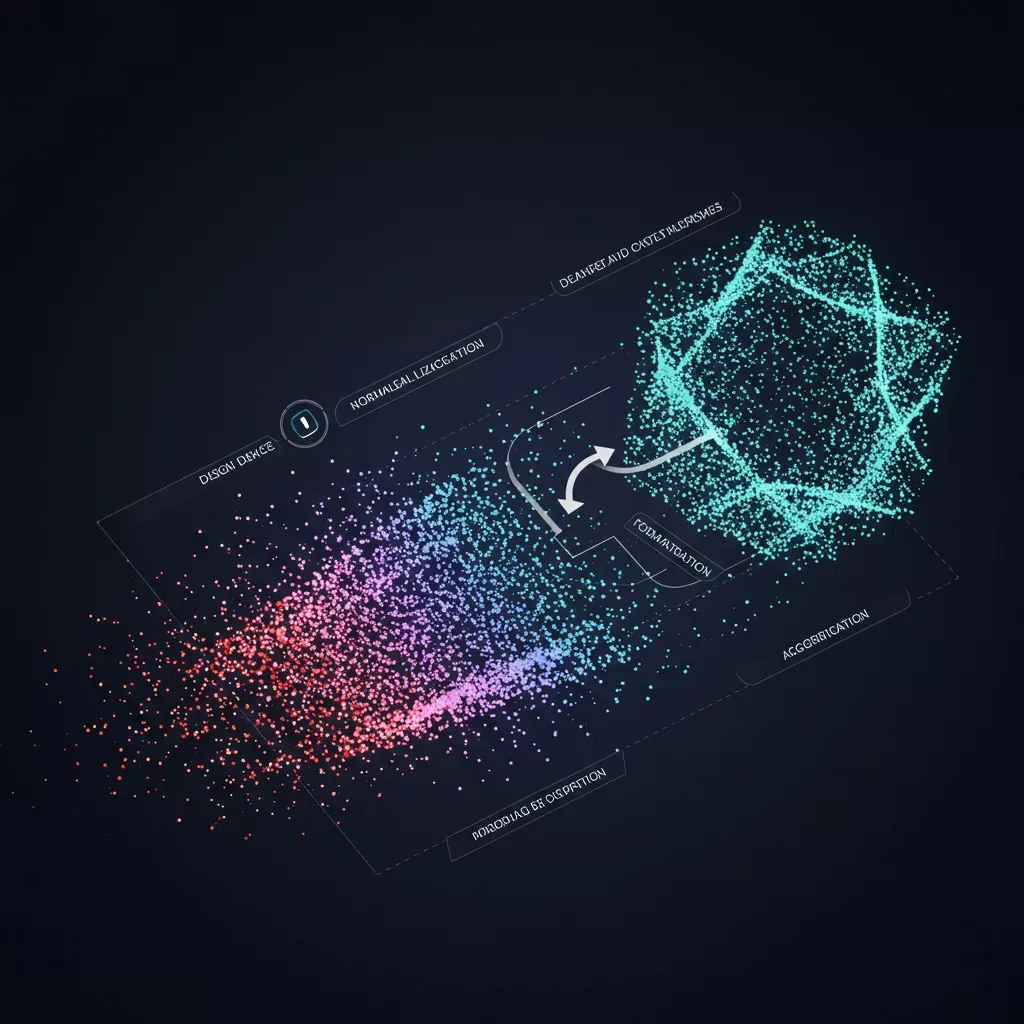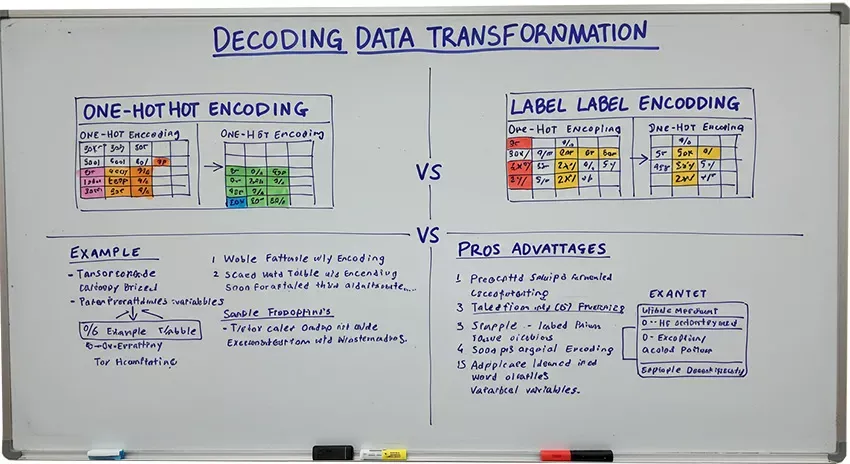Decoding Data Transformation: One-Hot Encoding vs Label Encoding
Data transformation is a crucial step in data preprocessing, especially when dealing with categorical variables in machine learning models. Encoding techniques like One-Hot Encoding and Label Encoding transform categorical data into numerical formats that algorithms can process effectively. This blog will explore these two popular encoding techniques, compare their advantages and disadvantages, and provide insights on when to use each based on various scenarios.

Introduction
Data transformation is a crucial step in data preprocessing, especially when dealing with categorical variables in machine learning models. Encoding techniques like One-Hot Encoding and Label Encoding transform categorical data into numerical formats that algorithms can process effectively. This blog will explore these two popular encoding techniques, compare their advantages and disadvantages, and provide insights on when to use each based on various scenarios.

Understanding Data Transformation Encoding
What is Data Transformation Encoding?
Data transformation encoding converts categorical variables into numerical formats, allowing machine learning algorithms to process the data without misinterpreting it. Without proper encoding, models might assume categorical data to have inherent ordinal relationships, which can lead to incorrect predictions.
Reference: [1]
________________________________________
One-Hot Encoding Explained
Definition
One-Hot Encoding transforms each categorical value into a new binary column. Each category in the original data is represented by one column, with binary values indicating the presence (1) or absence (0) of the category.
Advantages of One-Hot Encoding
• No Ordinal Relationship Assumption: Unlike Label Encoding, One-Hot Encoding does not assume an ordinal relationship between categories.
• Widely Supported: Compatible with most machine learning algorithms.
Disadvantages of One-Hot Encoding
• High Dimensionality: Can lead to a large number of features if the categorical variable has many levels.
• Sparse Data: The resulting data matrix may contain many zeros, consuming more memory.
Reference: [2]
________________________________________
Label Encoding Explained
Definition
Label Encoding assigns an integer value to each unique category. For example, three categories—red, green, and blue—might be assigned values 0, 1, and 2, respectively.
Advantages of Label Encoding
• Memory Efficient: Uses less memory compared to One-Hot Encoding.
• Simpler Representation: Creates a single column representing the categories.
Disadvantages of Label Encoding
• Ordinal Relationship Misinterpretation: Algorithms may interpret the encoded values as having an inherent order, which may not exist.
Reference: [3]
________________________________________
One-Hot Encoding vs Label Encoding: A Comparative Analysis
Feature | One-Hot Encoding | Label Encoding |
| Memory Usage | High | Low |
| Dimensionality | High (many categories) | Low |
| Ordinal Assumption | No | Yes |
| Algorithm Compatibility | Universal | Limited (depends on algorithm) |
Reference: [1]
________________________________________
When to Use One-Hot Encoding vs Label Encoding
Use One-Hot Encoding When:
• The categorical variable is nominal (no intrinsic ordering).
• You are working with algorithms that assume linear relationships, such as linear regression or logistic regression.
Use Label Encoding When:
• The categorical variable is ordinal (has an intrinsic order).
• You want to reduce dimensionality and memory usage.
Reference: [2]
________________________________________
Implementing Encoding in Python Using Scikit-Learn
One-Hot Encoding with Scikit-Learn
from sklearn.preprocessing import OneHotEncoder
import pandas as pd
# Sample data
data = pd.DataFrame({‘Color’: [‘Red’, ‘Green’, ‘Blue’]})
encoder = OneHotEncoder(sparse=False)
encoded_data = encoder.fit_transform(data[[‘Color’]])
print(encoded_data)
Label Encoding with Scikit-Learn
from sklearn.preprocessing import LabelEncoder
# Sample data
data = pd.DataFrame({‘Color’: [‘Red’, ‘Green’, ‘Blue’]})
encoder = LabelEncoder()
data[‘Color_encoded’] = encoder.fit_transform(data[‘Color’])
print(data)
Reference:
________________________________________
Conclusion
Choosing between One-Hot Encoding and Label Encoding depends on the dataset and the machine learning algorithm used. One-Hot Encoding is best suited for nominal data and algorithms that assume linearity. In contrast, Label Encoding is more memory-efficient and suitable for ordinal data. Understanding these encoding techniques ensures better model performance and more accurate predictions.
References:
1. GeeksforGeeks: One-Hot Encoding vs Label Encoding
2. Medium – Biased Algorithms: One-Hot Encoding vs Label Encoding
3. Analytics Vidhya: One-Hot Encoding vs Label Encoding Using Scikit-Learn